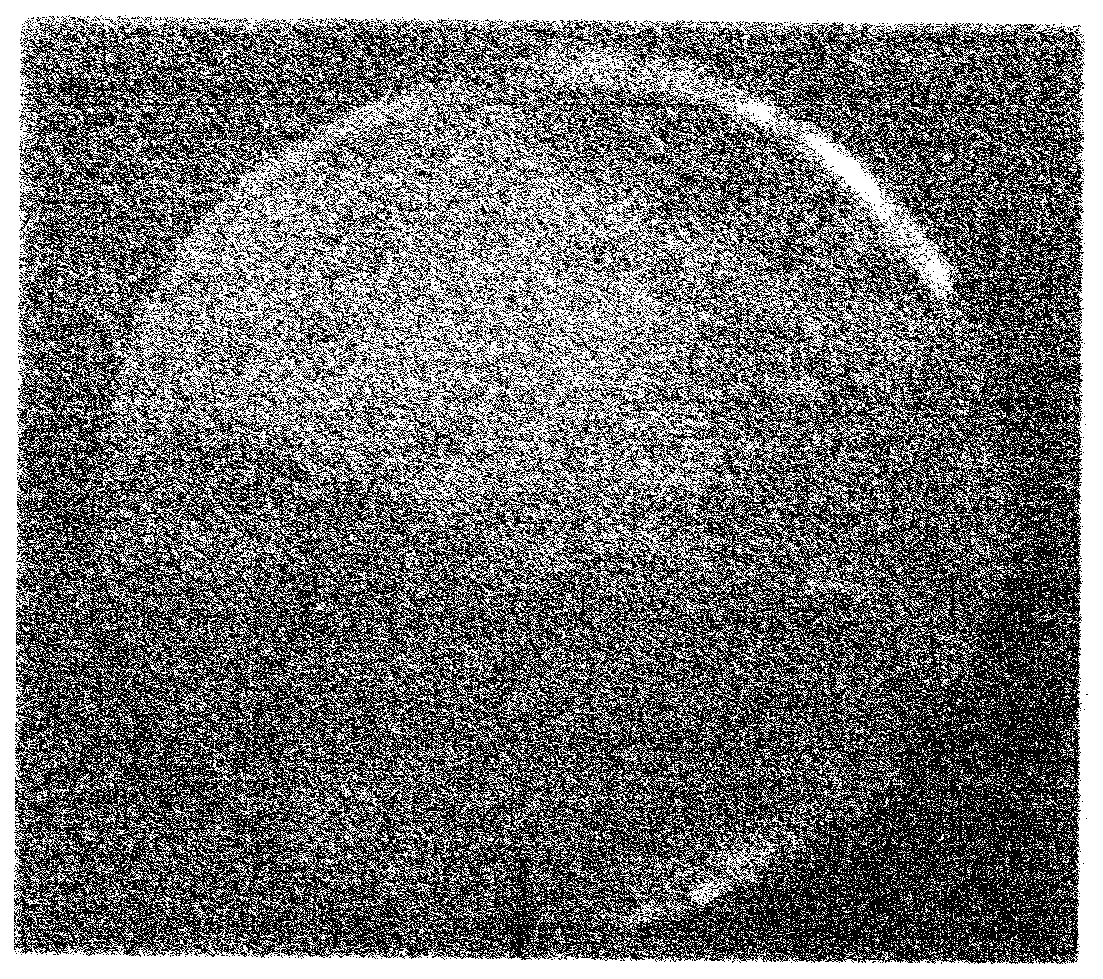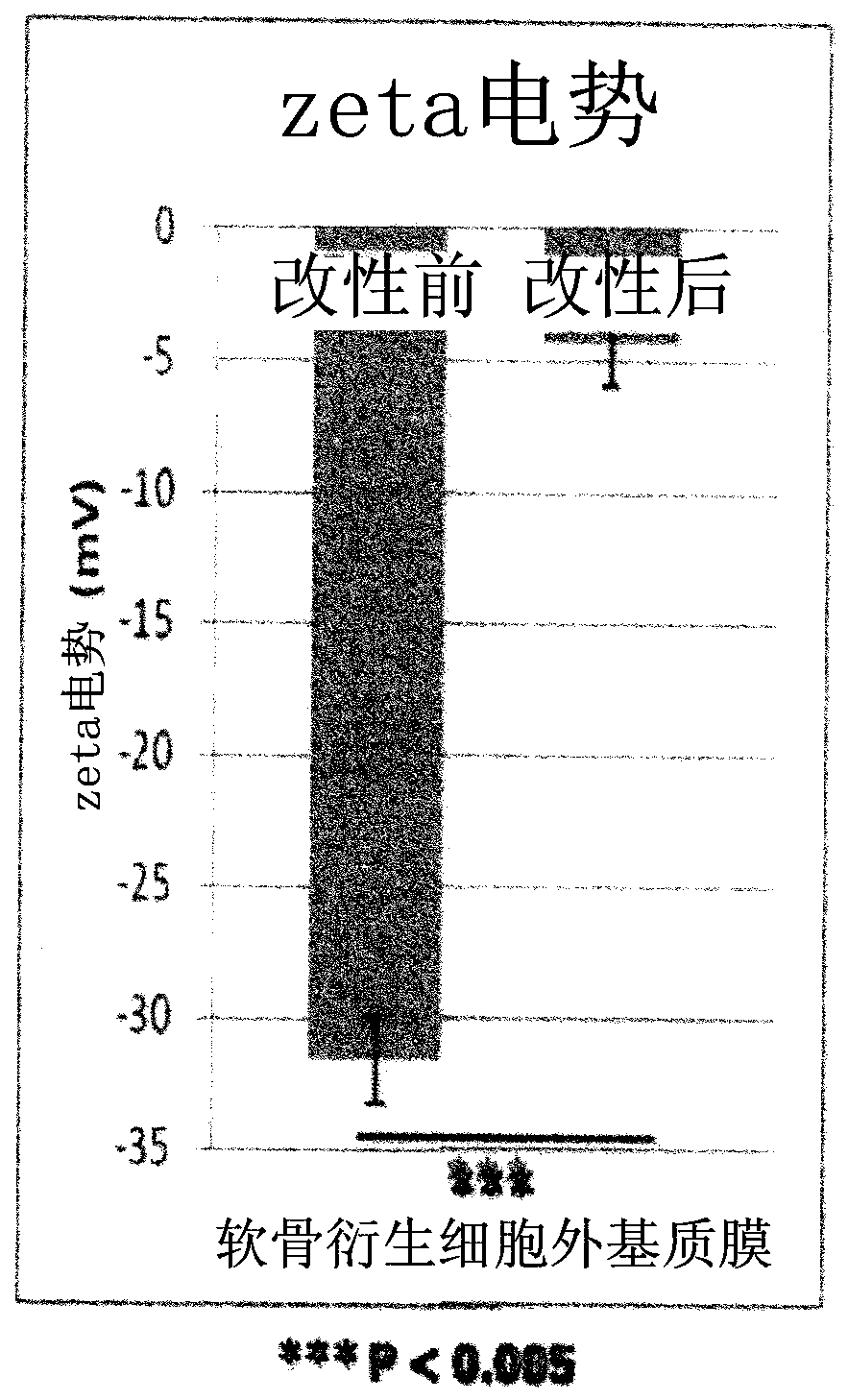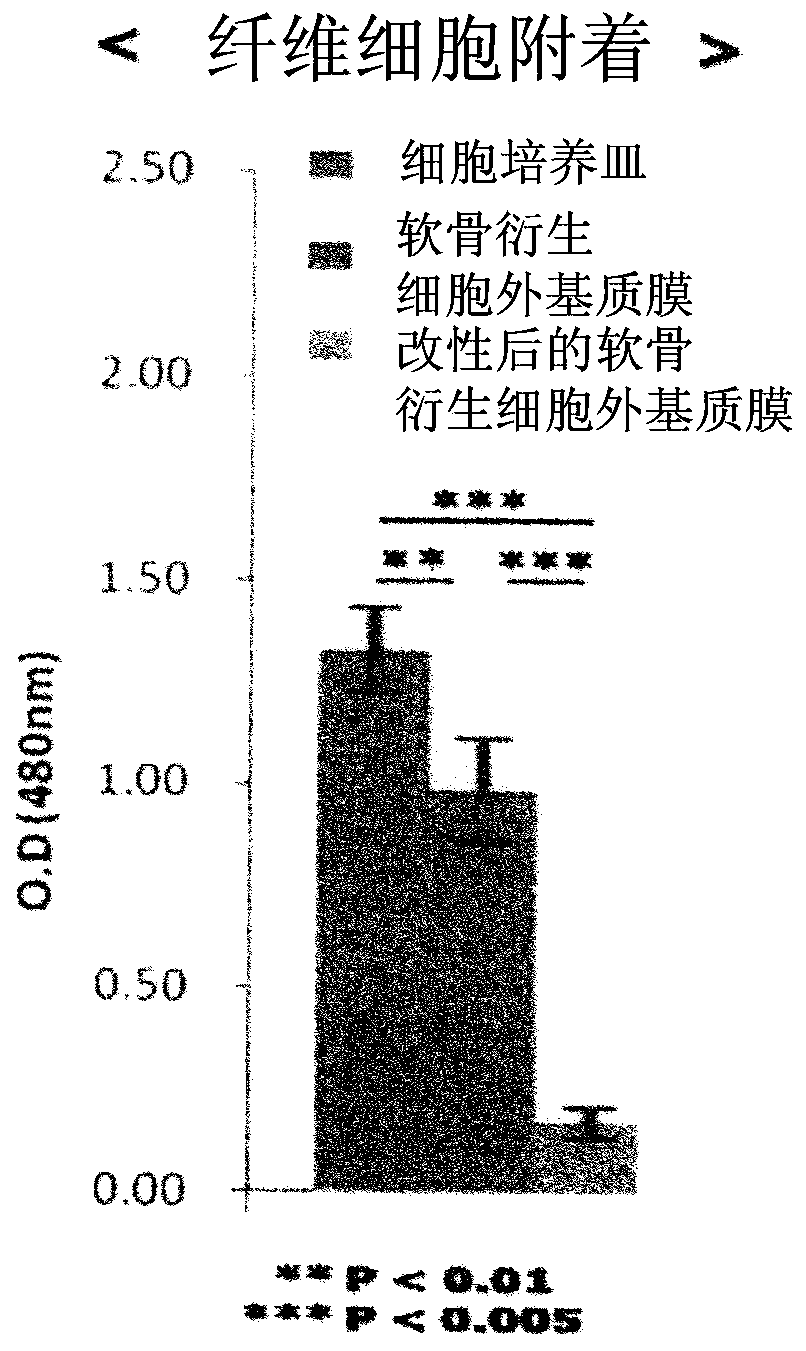Use of composition comprising surface-modified chondrocyte-derived extracellular matrix membrane as an active ingredient for preventing adhesion
A technology to prevent adhesions and chondrocytes, applied to medical preparations containing active ingredients, organic active ingredients, drug combinations, etc., can solve the problems that anti-adhesion agents are difficult to exert their effects continuously, hinder wound healing, and cause inflammatory reactions
- Summary
- Abstract
- Description
- Claims
- Application Information
AI Technical Summary
Problems solved by technology
Method used
Image
Examples
Embodiment 1
[0026] making chondrocyte-derived extracellular matrix membrane
[0027] Cells from sterile porcine knee cartilage tissue were obtained and transplanted at a high concentration to obtain a membrane morphology. The membrane obtained by the above method is decellularized and washed with an enzyme such as deoxyribonuclease I (DNase I) to obtain a chondrocyte-derived extracellular matrix membrane. The main components are collagen and proteoglycans (refer to Korean Patent Publication No. 10-0816395) ( figure 1 ).
Embodiment 2
[0028] Surface modification of chondrocyte-derived extracellular matrix membrane
[0029] The film obtained in Example 1 was put into ethyl (dimethylaminopropyl) carbodiimide (ethyl (dimethylaminopropyl) carbodiimide; EDC) / N-hydroxysuccinimide (N-Hydroxysuccinimide; NHS) Solutions were prepared at 50 mM in distilled water and processed with shaking at 250 rpm for 12 hours and at room temperature. Then, poly-L-lysine (poly-L-lysine; PLL) was prepared in distilled water at 10 ug / ml, put into the EDC / NHS treated membrane and shaken at 250 rpm for 24 hours and treated at room temperature. After the treatment, the films were washed three times in triple distilled water and dried for 10 minutes each time. In order to measure the surface potential difference of the surface-modified film, it is fixed on a glass plate, and monitoring particles that can move due to electricity are placed in 10mM sodium chloride, and the fixed film is covered and the current flows. From this, the ch...
Embodiment 3
[0031] Fibroblast attachment experiment
[0032] In this example, using the cartilage-derived extracellular matrix membranes prepared in the cell culture dish, Example 1 and Example 2, the difference in attachment rate of fibroblasts that play a role in the adhesion mechanism was confirmed by the following method.
[0033] The cartilage-derived extracellular matrix membrane prepared in Example 1 and the modified membrane prepared in Example 2 were attached to different 24-well dishes (well dish) with a diameter of 5 mm, dried and fixed, and carried out Ethylene oxide gas (EOgas) sterilization. And transplant 2×10 in the dishes coated with each membrane and in the 24-well plates (well plate) not coated. 4Fibroblasts were allowed to attach for 24 hours. Then, non-attached cells were washed with PBS buffer, and MTT assay (MTT assay) was performed to confirm cells attached to each surface (measured at absorbance at 460 nm).
[0034] Such as image 3 As shown, as a result, t...
PUM
 Login to View More
Login to View More Abstract
Description
Claims
Application Information
 Login to View More
Login to View More - Generate Ideas
- Intellectual Property
- Life Sciences
- Materials
- Tech Scout
- Unparalleled Data Quality
- Higher Quality Content
- 60% Fewer Hallucinations
Browse by: Latest US Patents, China's latest patents, Technical Efficacy Thesaurus, Application Domain, Technology Topic, Popular Technical Reports.
© 2025 PatSnap. All rights reserved.Legal|Privacy policy|Modern Slavery Act Transparency Statement|Sitemap|About US| Contact US: help@patsnap.com



